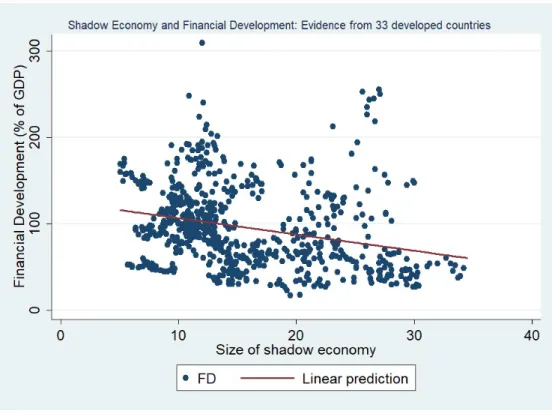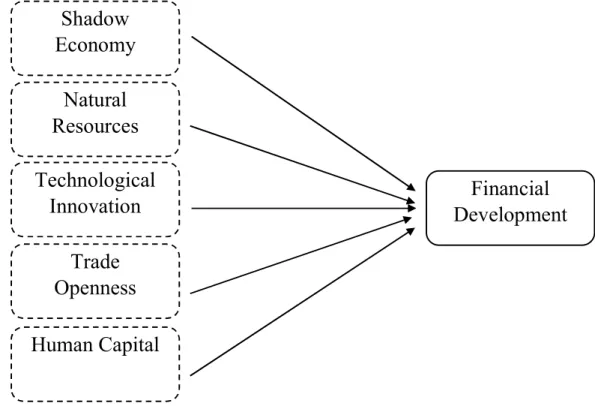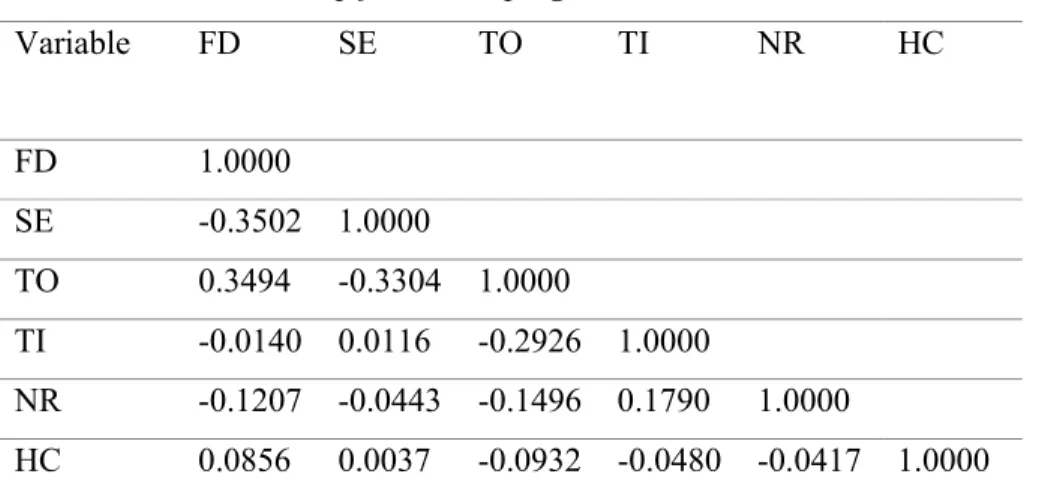First of all, we would like to thank Universiti Tunku Abdul Rahman (UTAR) for providing us a platform and opportunity to carry out this research project. Next, we would like to express our greatest appreciation and gratitude to our research project supervisor, Dr. Yiew has sacrificed his valuable time to guide, help and motivate us to complete this research project.
We appreciate and thank all the efforts, cooperation and encouragement among the team members in carrying out this research project. Therefore, the purpose of this paper is to examine the impact of the gray economy on financial development for 33 developed countries and 124 developing countries over a period using a two-stage robust system of generalized method of moments (GMM) dynamic panel estimators. The results summarized that the shadow economy has a negative impact on financial development in both developed and developing countries.
Natural resources showed an insignificant relationship to financial development for developed and developing countries, while trade openness and technological innovation showed a significant relationship to financial development for developed and developing countries.
INTRODUCTION
- Introduction
- Background of Study
- Problem Statement
- Research Question
- Research Objective
- Significance of Study
Schneider and Enste (2000) expressed that the size of the shadow economy is a major problem for a country's economy. Elgin and Uras (2013) describe the presence of shadow economy in the market can limit the growth of financial development in the country. The size of the shadow economy and the financial development for developed countries tend to have a downward trend.
The developing countries maintain higher value in shadow economy and lower financial development value compared to developed countries. Therefore, it shows that the shadow economy will have a negative effect on financial development in the countries. Therefore, we separate the developed and developing countries to examine the impact of shadow economy on financial development.
This is because the economic development would worsen if the country has a higher activity in the shadow economy.
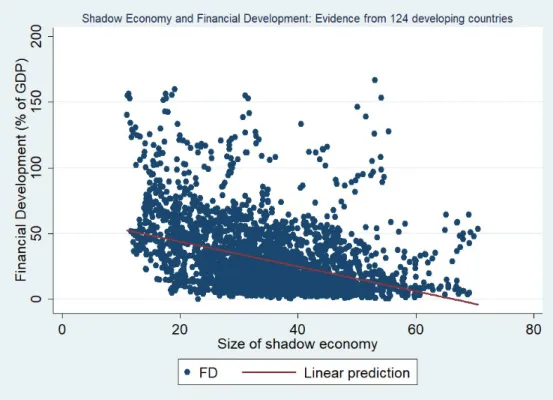
LITERATURE REVIEW
- Introduction
- Foundation of Topic
- Theoretical Review
- Theory of Shadow Economy
- Literature Review
- The Relationship Between Shadow Economy and
- The Relationship Between Technological
- The Relationship between Trade Openness and
- The Relationship between Human Capital and
- Finding the Gaps
Therefore, it is likely that the size of the shadow economy tends to negatively affect financial development (Elgin & Uras, 2013). The negative relationship between economic development and financial development in a country has been proven by Mutlugün (2014), which indicates that the economic sector is also considered a main driving force for the development of the financial sector in a country. This may indicate that the countries with abundant natural resources tend to promote the economic development as well as the economic development of a country (Smith, 1776 & Ricardo, 1911).
In this situation, it indicates that the relationship between human capital and financial development tends to be positive (Khan, Hussain, Shahbaz, Yang, & Jiao, 2020). Therefore, human capital is said to promote the development of the financial sector as well as the economic sector (Rodrik, 2007). Jiao (2020), they conclude that the abundance of natural resources is negatively associated with financial development in China.
They argued that the relationships between globalization, natural resources, and human capital will enhance financial development in the long run.
METHODOLOGY
- Introduction
- Research Design
- Research Framework
- Shadow Economy and Financial Development . 24
- Trade Openness and Financial Development
- Human Capital and Financial Development
- Hypothesis Development
- Data Descriptions
- Empirical Model
- Generalized Method of Moments (GMM)
- Empirical Methodology
- Sargan Test
- Hansen Test
- Cross-Sectional Dependence Test
Natural Resource Abundance, Technological Innovation and Human Capital Linkage to Financial Development: A Case Study of China. In recent decades, numerous researchers and scholars have investigated the relationship between the shadow economy and financial development, as well as how the shadow economy has influenced financial development. Therefore, we expected that there is an inverse or negative relationship between shadow economy and financial development in both developing and developed countries.
In developing countries, there is more likely to be a negative relationship between natural resources and financial development (Sachs & Warner, 1995). In addition, there may also be a negative relationship between natural resources and financial development when the financial system is less developed. In developed countries, the relationship between natural resources and financial development is positive, as there are more educated people.
In this situation, we expect the relationship between natural resources and financial development to be positive in developed countries. In this situation, we expect the relationship between technological innovation and financial development to be positive in both developing and developed countries. Trade openness has been found to promote a country's financial development by Baltagi et al.
But there are also some researchers who have found that trade openness has a negative impact on the economic development of a country (Zhang, Zhu & Lu, 2015). According to Outreville (1999), the researcher mentioned that strong human capital is considered as an important driving force in promoting the financial development of developing countries. Therefore, we expect that the relationship between human capital and financial development should be positive in both developing and developed countries.
The endogenous variable of this study is financial development (FD) and the exogenous variables are the size of the shadow economy (SE), natural resources (NR), technological innovation (TI), trade openness (TO), and human capital (HC). . FDit= Financial development SEit = The size of the shadow economy NRit = Abundant natural resources TIit = Technological innovation HCit=Human Capital.
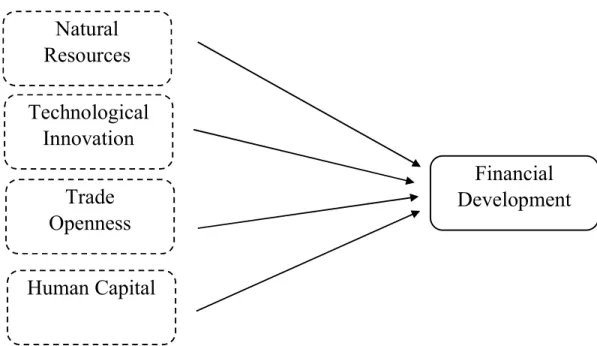
DATA ANALYSIS
- Introduction
- Descriptive Statistics
- Descriptive Statistics for Developed Countries . 37
- Sargan-Hansen Test
- Arellano-Bond Serial Correlation
- Fixed Effect Regression Model
- Cross-sectional Dependence Test
- The Difference and System GMM Approach
- The Results of Difference and System GMM
- The Results of Difference and System GMM
- Comparison of The Results for Developed Countries and
For the Hansen test results, it showed that both models for developed and developing countries are significant and valid. This is because their P values for developed countries and developing countries are greater than the significant level of 0.1. This is because they do not affect the financial development of developed countries.
This meant that the error term in model for developing countries has a strong dependence because it is lower than the significant level which is 0.1. The results for technological innovation show that it has a positive relationship with financial development in developed countries. Based on the results we found, it shows the negative relationship between natural resources and the financial development.
The last factors will mainly promote the financial development which is the human capital of the countries. According to the results of the stable two-step GMM system, it turns out that human capital has a positive relationship with financial development. However, it had an insignificant impact on financial development due to additional barriers in developing countries.
In addition, the result of natural resources shows that there was an insignificant impact on financial development in developing countries. Based on the result of the two-stage robust GMM estimation system, the results were completely different for developed and developing countries. However, TI was found to be statistically insignificant in developing countries, which contrasts with the results in developed countries.
While for NR it also turned out to be statistically insignificant in developing countries, which corresponds to the results in developed countries. Only trade openness (TO) and technological innovation (TI) also showed a positive connection to financial development (FD) for both developed and developing countries.
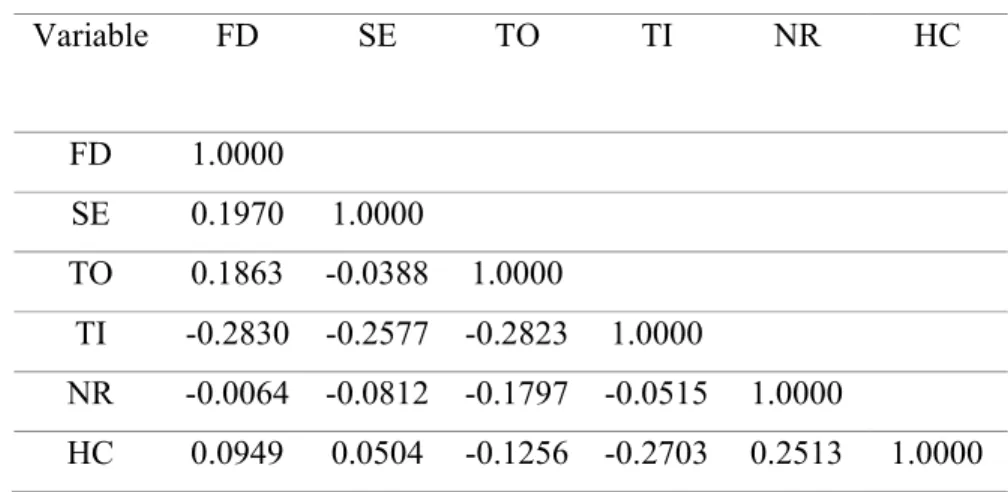
DISCUSSION, CONCLUSION, AND IMPLICATIONS 56
Discussions of Major Findings
Based on our result, system GMM tends to be more accurate and reliable compared to different GMM in both developing and developed countries. Last but not least, the results from developed countries show that the shadow economy and natural resources have a negative impact on financial development, while trade openness, technological innovation and human capital are positively correlated with financial development. For developing countries, shadow economy and human capital have a negative impact on financial development, whereas trade openness shows that it has a positive correlation impact on financial development.
Implications of the Study
- For Government Bodies
- For Domestic or Foreign Investors
- For Future Researchers
Reducing the complexity of the tax system and introducing fiscal measures through both political and administrative can help to control and limit the size of the shadow economy effectively. Through this research, investors would more understand and realize the impact of shadow economy on financial development. Investors must take into account the variables in the research that can affect the financial development to consider making their investment plan in certain countries, such as foreign direct investment (FDI), stock market debt instruments.
A poor performance of the financial development will reduce the confidence of the investors, and consequently the economy of the country concerned will slow down. Therefore, it is important for the investors to understand the relationship on how those variables affect financial development. The result of the size of the shadow economy's impact on the financial development is also consistent with our expected result and major findings.
Therefore, future researchers can focus on the time dimension and countries to further explain the impact on financial development and the relationship between time period and findings. There are also other omitted variables that may affect the financial development in different countries. As a result, future researchers can use these research findings as a reference to explore more relevant research, such as exploring other variables such as inflation, interest rate, politics, etc.
Limitations of the Study
This may be because we captured different time periods and number of countries to apply in our research compared to past research.
Recommendations for Future Research
Determining resource curse hypothesis in mediating economic development and clean energy sources: Go-for-green resource policies. Financial development and economic growth: Evidence from a panel of 16 African and non-African low-income countries. Human capital and financial development in economic growth: new evidence using the translog production function.
The long-term and short-term effects of remittances on financial development in developing countries. Oil price volatility, Islamic financial development and economic growth in Gulf Cooperation Council (GCC) countries. Research on World Bank Group lending and abundance of natural resources triggered financial development in KART countries.
Dynamics of Information and Communication Technology Infrastructure, Economic Growth and Financial Development: Evidence from Asian Countries. The role of natural resource wealth, international trade and financial development in the economic development of selected countries. The Effects of Internet Use, Financial Development and Trade Openness on Economic Growth in South Africa: A Time Series Analysis.
Empirical relationship between indicators of financial development and human capital in some selected Asian countries. The Impact of Information and Communication Technology and Financial Development on the Economic Growth of OPEC Developing Economies. An empirical investigation of coordinated natural resource development, financial development and ecological efficiency in China.
Descriptive Analysis for Developing Countries
Correlation Relationship for Developing Countries
One-Step Difference GMM Result for Developing Countries
Two-Step Difference GMM Result for Developing Countries
Two-Step Robust Difference GMM Result for Developing
One-Step System GMM Result for Developing Countries
Two-Step System GMM Result for Developing Countries
Two-Step Robust System GMM Result for Developing
Descriptive Analysis for Developed Countries
Correlation Relationship for Developed Countries
One-Step Difference GMM Result for Developed Countries
Two-Step Difference GMM Result for Developed Countries
Two-Step Robust Difference GMM Result for Developed
One-Step System GMM Result for Developed Countries
Two-Step System GMM Result for Developed Countries
Fixed Effect Regression Model for Developed Countries
Cross-sectional Dependence Test for Developed Countries
Foxed Effect Regression Model for Developing Countries
